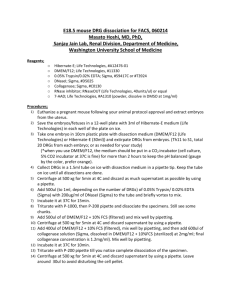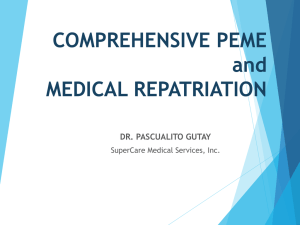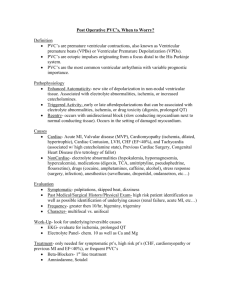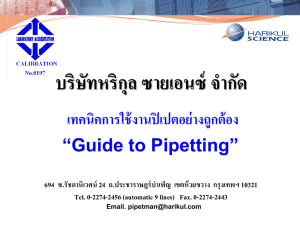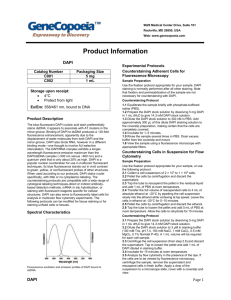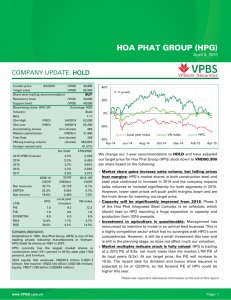Preparing procyclic form cytoskeletons
advertisement
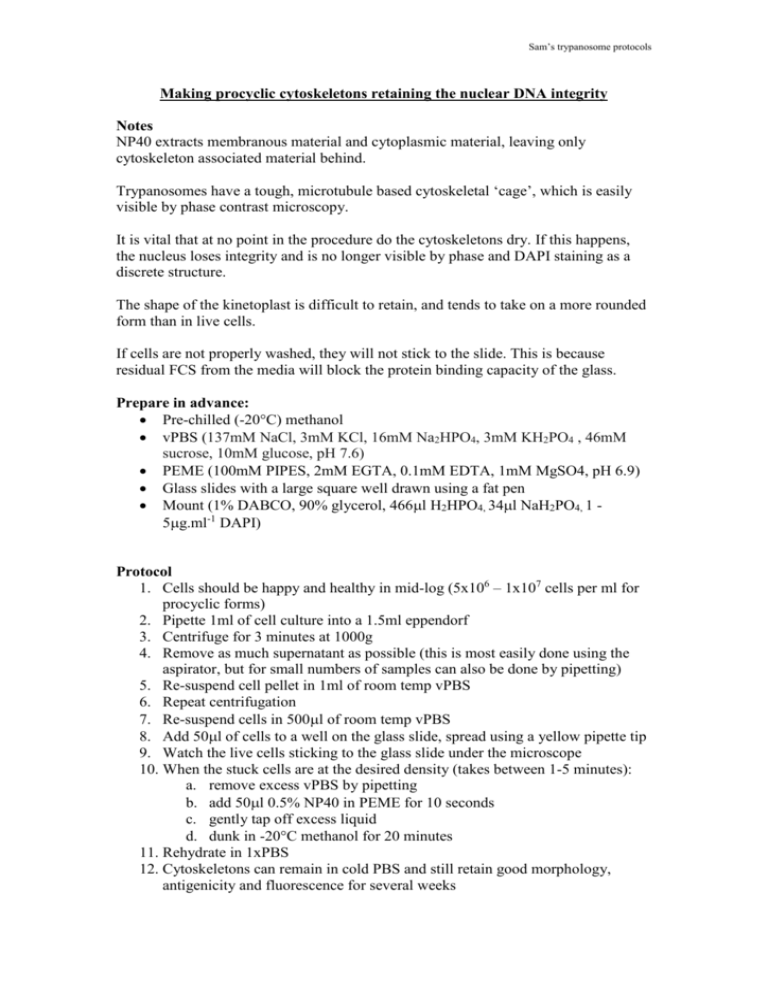
Sam’s trypanosome protocols Making procyclic cytoskeletons retaining the nuclear DNA integrity Notes NP40 extracts membranous material and cytoplasmic material, leaving only cytoskeleton associated material behind. Trypanosomes have a tough, microtubule based cytoskeletal ‘cage’, which is easily visible by phase contrast microscopy. It is vital that at no point in the procedure do the cytoskeletons dry. If this happens, the nucleus loses integrity and is no longer visible by phase and DAPI staining as a discrete structure. The shape of the kinetoplast is difficult to retain, and tends to take on a more rounded form than in live cells. If cells are not properly washed, they will not stick to the slide. This is because residual FCS from the media will block the protein binding capacity of the glass. Prepare in advance: Pre-chilled (-20C) methanol vPBS (137mM NaCl, 3mM KCl, 16mM Na2HPO4, 3mM KH2PO4 , 46mM sucrose, 10mM glucose, pH 7.6) PEME (100mM PIPES, 2mM EGTA, 0.1mM EDTA, 1mM MgSO4, pH 6.9) Glass slides with a large square well drawn using a fat pen Mount (1% DABCO, 90% glycerol, 466l H2HPO4, 34l NaH2PO4, 1 5g.ml-1 DAPI) Protocol 1. Cells should be happy and healthy in mid-log (5x106 – 1x107 cells per ml for procyclic forms) 2. Pipette 1ml of cell culture into a 1.5ml eppendorf 3. Centrifuge for 3 minutes at 1000g 4. Remove as much supernatant as possible (this is most easily done using the aspirator, but for small numbers of samples can also be done by pipetting) 5. Re-suspend cell pellet in 1ml of room temp vPBS 6. Repeat centrifugation 7. Re-suspend cells in 500l of room temp vPBS 8. Add 50l of cells to a well on the glass slide, spread using a yellow pipette tip 9. Watch the live cells sticking to the glass slide under the microscope 10. When the stuck cells are at the desired density (takes between 1-5 minutes): a. remove excess vPBS by pipetting b. add 50l 0.5% NP40 in PEME for 10 seconds c. gently tap off excess liquid d. dunk in -20C methanol for 20 minutes 11. Rehydrate in 1xPBS 12. Cytoskeletons can remain in cold PBS and still retain good morphology, antigenicity and fluorescence for several weeks

